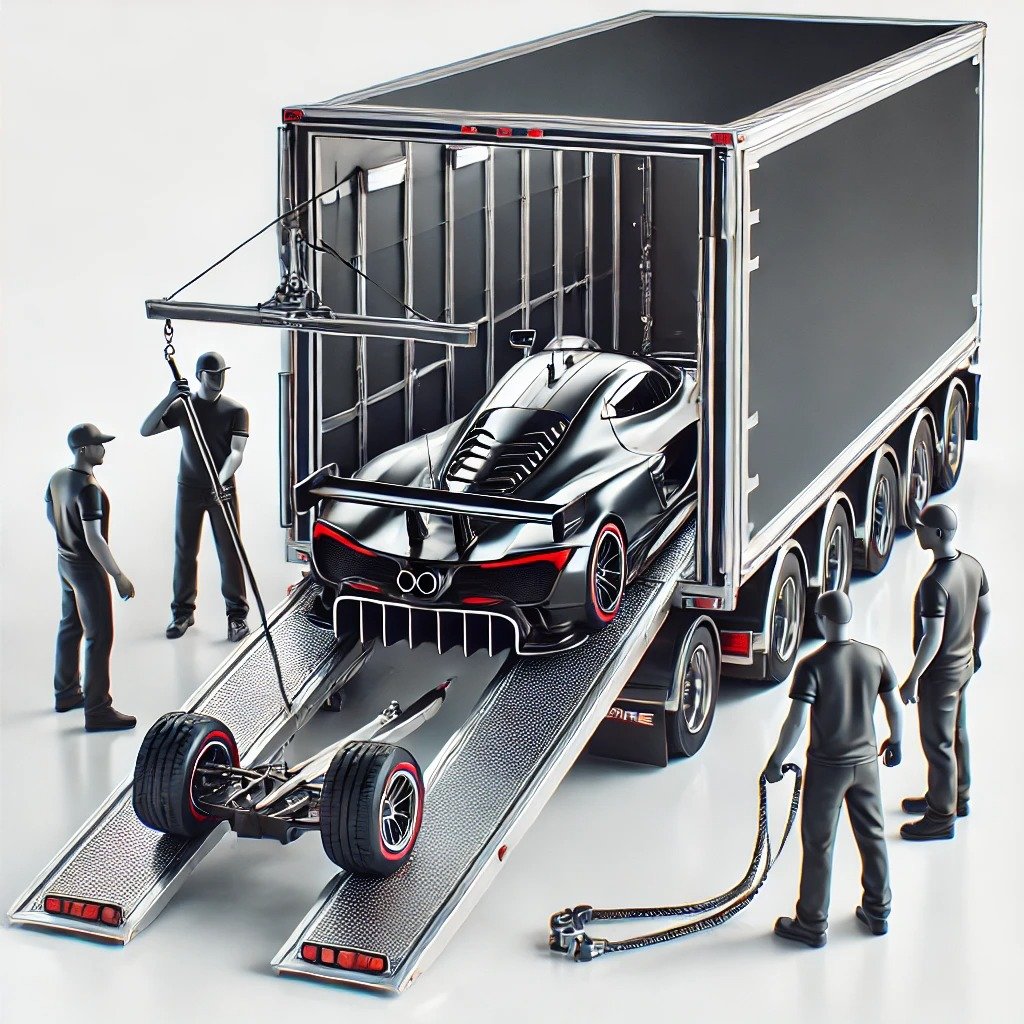Transporting a race car between events requires careful planning and attention to detail. Whether you’re moving your car to a local track or across state lines, making sure it arrives safely and on time is essential for your success. However, many racers make common mistakes during this process, which can lead to delays, damage, or costly errors.
In this article, we’ll cover the top 5 mistakes to avoid when moving your race car between events, while highlighting the benefits of working with relocation assistance and reliable car shipping companies.

1. Underestimating the Importance of Professional Relocation Assistance
One of the most common mistakes race car owners make is underestimating the value of professional relocation assistance. Moving a race car is not the same as transporting a regular vehicle. Race cars require special handling and protection to ensure they arrive in top condition.
- Skipping professional services: Some racers may opt to transport their cars themselves without realizing the risks involved. Professional relocation assistance can provide specialized equipment and experienced handlers who know how to move race cars safely.
- Overlooking insurance: Working with professionals typically includes insurance coverage, which is crucial in case of any damage during transport. If you move the car on your own, you may not have this level of protection.
- Not considering enclosed transport: While open vs enclosed car transport might show open transport as the cheaper option, using an enclosed carrier is the better choice for race cars. This method provides full protection from weather, road debris, and potential damage.
By utilizing relocation assistance services, you ensure that your car is transported by experts who understand the unique needs of race cars, giving you peace of mind and protecting your investment.
2. Failing to Properly Prepare the Car for Shipping
Another major mistake is neglecting to prepare your race car properly for transport. Just like on the track, preparation is key to success when moving your vehicle between events.
- Not securing loose parts: Race cars often have customized parts that can become loose during transport. Before shipping, make sure to remove or secure any detachable or sensitive components, such as spoilers, antennas, or mirrors.
- Ignoring fluid levels: It’s a good idea to drain or reduce certain fluid levels (like fuel) before transporting your race car, especially if you’re shipping cars across country. This reduces the chance of leaks and capability dangers.
- Skipping a thorough inspection: Always inspect your race car before transport and document its current condition. Take photos of the car’s exterior and interior to have a record in case any issues arise during shipping. This documentation can be useful if you need to make an insurance claim later.
Proper preparation can save you from unnecessary damage or delays and helps ensure your race car is ready to perform as soon as it arrives at the next event.

3. Choosing the Wrong Car Shipping Company
One of the most critical decisions when moving your race car between events is selecting the right car shipping company. Not all companies have experience with transporting high-performance vehicles, and choosing the wrong provider can lead to serious problems.
- Relying solely on price: While it’s tempting to choose the cheapest option, focusing solely on cost can backfire. Cheaper car shipping companies may cut corners, lack proper insurance, or use lower-quality equipment, which increases the risk to your car.
- Not verifying credentials: Before committing to a car shipping company, check their credentials. Ensure they are licensed, bonded, and insured, and have experience with transporting race cars or other high-performance vehicles.
- Failing to read reviews: Customer reviews and ratings can provide valuable insights into a company’s reliability and service quality. Look for vehicle shipping companies with positive reviews and satisfied clients, especially those who have experience with similar vehicles.
Working with a reputable auto transporter ensures that your race car is handled by experts who understand the specific needs of transporting high-value and sensitive vehicles.
4. Neglecting to Consider the Timing of the Shipment
Timing is everything when it comes to racing, and the same holds true for transporting your race car between events. One of the biggest mistakes racers make is neglecting to consider the timing of their shipment, which can lead to stressful delays or even missed events.
- Last-minute bookings: Booking a shipping service at the last minute can limit your options and result in higher prices. It’s important to schedule your shipment as early as possible, especially during peak racing seasons when car shipping companies are in high demand.
- Ignoring delivery windows: Some car shipping companies may offer a range of delivery windows rather than a specific delivery date. Make sure to confirm the estimated time of arrival with the company and plan your schedule accordingly to avoid missing important deadlines.
- Not accounting for potential delays: Factors such as weather, traffic, or unexpected mechanical issues can delay your shipment. Always build in extra time to accommodate any unforeseen delays, so you aren’t left scrambling at the last minute.
Proper planning and scheduling ensure that your race car arrives at the track on time, ready to perform, without added stress.

5. Overlooking the Importance of Communication and Tracking
Finally, poor communication with your car shipping company can lead to frustration and uncertainty during the relocation process. It’s essential to stay in touch with the shipping provider and take advantage of tracking services.
- Not asking questions: Don’t hesitate to ask your car shipping company detailed questions about their process, from how they handle race cars to what insurance coverage is included. Clear communication helps set expectations and ensures you’re confident in the company’s ability to deliver.
- Forgetting to track the shipment: Many shipping companies now offer tracking systems that allow you to monitor your vehicle’s progress in real-time. Taking advantage of this feature can help ease your mind and keep you informed about your car’s location and estimated arrival time.
- Not maintaining contact: Keep in touch with the shipping company throughout the relocation process, especially if your race car is traveling a long distance. Regular updates ensure that both parties are on the same page and that any potential issues are addressed immediately.
Strong communication helps prevent misunderstandings and ensures that you are informed at every step of the process, allowing you to focus on your next event.
Conclusion
Transporting your race car between events is a crucial part of staying competitive, but it requires careful planning and attention to detail. By avoiding these common mistakes—underestimating the importance of professional relocation assistance, failing to prepare your car, choosing the wrong car shipping company, ignoring timing, and neglecting communication—you can ensure that your race car arrives safely and on time, ready for the track. With the right strategies and partners in place, you’ll be able to focus on what really matters: winning races.

